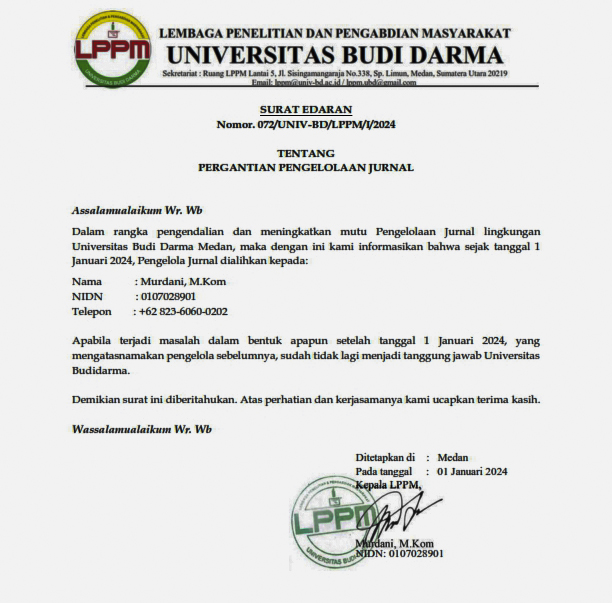Tour Experience with Interactive Map Simulation based on Mobile Augmented Reality for Tourist Attractions in Banjarmasin City
DOI:
https://doi.org/10.30865/ijics.v6i1.3900Keywords:
A/B Testing, Augmented Reality, Extreme Programming, Interactive Map Simulation, Marker-Based Tracking, Tourist Attractions, User ExperienceAbstract
Tourist attractions are one of the attractions in the tourism sector, especially in the city of Banjarmasin. Along with the progress of the tourism sector, it is necessary to develop, provide facilities, management, and promotion. The purpose of this research is to build an application to identify tourist attractions in the City of Banjarmasin using Augmented Reality (AR) visualization by creating an interactive map simulation as a marker that will bring up three-dimensional objects, the application is called AR-AyoKeBanjarmasin. The method used in this research consists of Extreme Programming (XP) as a method in the software development process, Marker-Based Tracking as the main method in pattern detection techniques in marker images that will display three-dimensional objects that have been programmed in AR applications, A/B Testing method is used to select the interface design expected by potential users, Black- Box Testing as a method of testing application functionality, and User-Experience Questionnaire (UEQ) as a technique and instrument to evaluate User Experience (UX) when using the AR application. The results show that the design chosen for the user interface is design A so that it can be continued to the coding stage. Functional testing gives the result that all features in the application have functioned as expected and non-functionally involving 50 respondents using a UX approach stating that the application has implemented the user convenience aspect with an average value of 2.93 with the predicate of Excellent. So that the AR-AyoKeBanjarmasin application can be recommended for use by touristsReferences
M. Sari, “Gagal di 2020, Visit Kalsel Year Dicanangkan di 2022,†2021, Accessed on: May 20, 2021. [Online]. Available: https://banjarmasin.tribunnews.com/2021/02/01/gagal-di-2020-visit-kalsel-year-dicanangkan-di-2022?page=all.
A. Syafrizal, M. H. Rifqo, and M. Ardiansyah, “Aplikasi Pengenalan Tempat Wisata Propinsi Bengkulu menggunakan Teknologi Augmented Reality (Video Playback) Berbasis Android,†Journal Techoprenership and Information System, vol. 1, no. 2, pp. 50-53, 2018.
P. Dangkham, “Mobile Augmented Reality on Web-Based for the Tourism Using HTML5,†In Proc. of the ICOIN, IEEE Xplore Digital Library, pp. 482-485, 2018.
M. S. B. W. T. M. P. S. B. Thennakoon, R. D. T. N. Rajarathna, S. P. B. Jayawickrama, M. P. D. S. M. Kumara, A. M. Imbulpitiya, and N. Kodagoda, “TOURGURU: Tour Guide Mobile Application for Tourists,†In Proc. of the ICAC, IEEE Xplore Digital Library, pp. 133-138, 2019.
G. Kharismajati, R. Umar, and Sunardi, “Penerapan Augmented Reality Location Based Service Obyek Wisata Purbalingga Berbasis Android,†In Proc. of the Seminar Nasional Dinamika Informatika, vol. 4, no. 1, pp. 1-7, 2020.
F. Hadi and R. Permana, “Augmented Reality Point of Interest (PoI) Pariwisata Kota Padang Berbasis Android,†Indonesian Journal of Computer Science, vol. 10, no. 1, pp. 41-53, 2021.
A. A. Syahidi, H. Tolle, A. A. Supianto, and K. Arai, “BandoAR: Real-Time Text Based Detection System Using AugmentedReality for Media Translator Banjar Language to Indonesian with Smartphone,†In Proc. of the 5th IEEE ICETAS, IEEE Xplore Digital Library, pp. 1-6, 2018.
A. A. Syahidi and H. Tolle, “Evaluation of User Experience in Translator Applications (Banjar-Indonesian and Indonesian-Banjar) Based on Mobile Augmented Reality Technology using the UX Honeycomb Method,†Journal of Game, Game Art and Gamification, vol. 06, no. 01, pp. 7-13, 2021.
A. A. Syahidi, Subandi, and A. Mohamed, “AUTOC-AR: A Car Design and Specification as a Work Safety Guide Based on Augmented Reality Technology,†Journal of Technological and Vocational Education, vol. 26, no. 1, pp.18-25, 2020.
R. S. Pressman, “Software Engineering A Practitoner’s Approach (Seventh Edition),†New York: The McGraw-Hill Companies Inc., 2010.
Subandi, A. S. B. Nugroho, Nurkamilia, and A. A. Syahidi, “Body Temperature Measurement Tool for Early Detection of COVID-19 Based on Interactive Augmented Reality Technology and Sensor MLX90614: Framework and Prototyping,†Jurnal Riset Komputer, vol. 8, no. 5, pp. 141-148, 2021.
A. A. Syahidi, Subandi, A. N. Azura, and I. Hastuti, “Virtual Museum Tour in Wasaka Banjarmasin to Introduce the Collection of Leaders and Local Heroes Based on Mobile Augmented Reality Technology in the New Normal Era,†COMPILER Journal, vol. 10, no. 1, pp. 1-10, 2021.
K. Beck and C. Andres, “Extreme Programming Explained : Embrace Change - Second Edition,†United States: Pearson Education, 2004.
A. A. Syahidi, H. Tolle, A. A. Supianto, and T. Hirashima, “Educational Media Design for Learning Basic Programming in Branching Control Structure Material Using Problem-Posing Learning Model,†Kinetik Game Technology Information System Computer Network Computing Electronics and Control, vol. 4, no. 4, pp. 325-336, 2019.
S. Nidhra and J. Dondeti, “Black Box and White Box Testing Techniques - A Literature Review,†International Journal of Embedded Systems and Applications, vol. 2, no. 2, pp. 29–50, 2012.
H. B. Santoso, M. Schrepp, R. Y. K. Isal, A. Y. Utomo, and B. Priyogi, “Measuring User Experience of the Student-Centered e-Learning Environment,†The Journal of Educators Online, vol. 13, no. 1, pp. 58–79, 2016.
A. A. Syahidi, A. N. Asyikin, R. Sania, and Subandi, “Implementation and Evaluation of User Experience on Mobile Augmented Reality Technology-Based Brochure Applications,†EDUMATIC: Jurnal Pendidikan Informatika, vol. 5, no. 2, pp. 137-146, 2021.
A. A. Syahidi, K. Arai, H. Tolle, A. A. Supianto, and K. Kiyokawa, “Augmented Reality in the Internet of Things (AR + IoT): A Review,†International Journal of Informatics and Computer Science, vol. 5, no. 3, pp. 258-265, 2021.
M. Schrepp, A. Hinderks, and J. Thomaschewski, “Construction of a Benchmark for the User Experience Questionnaire (UEQ),†International Journal of Interactive Multimedia and Artificial Intelligence, vol. 4, no. 4, pp. 40-44, 2017.







